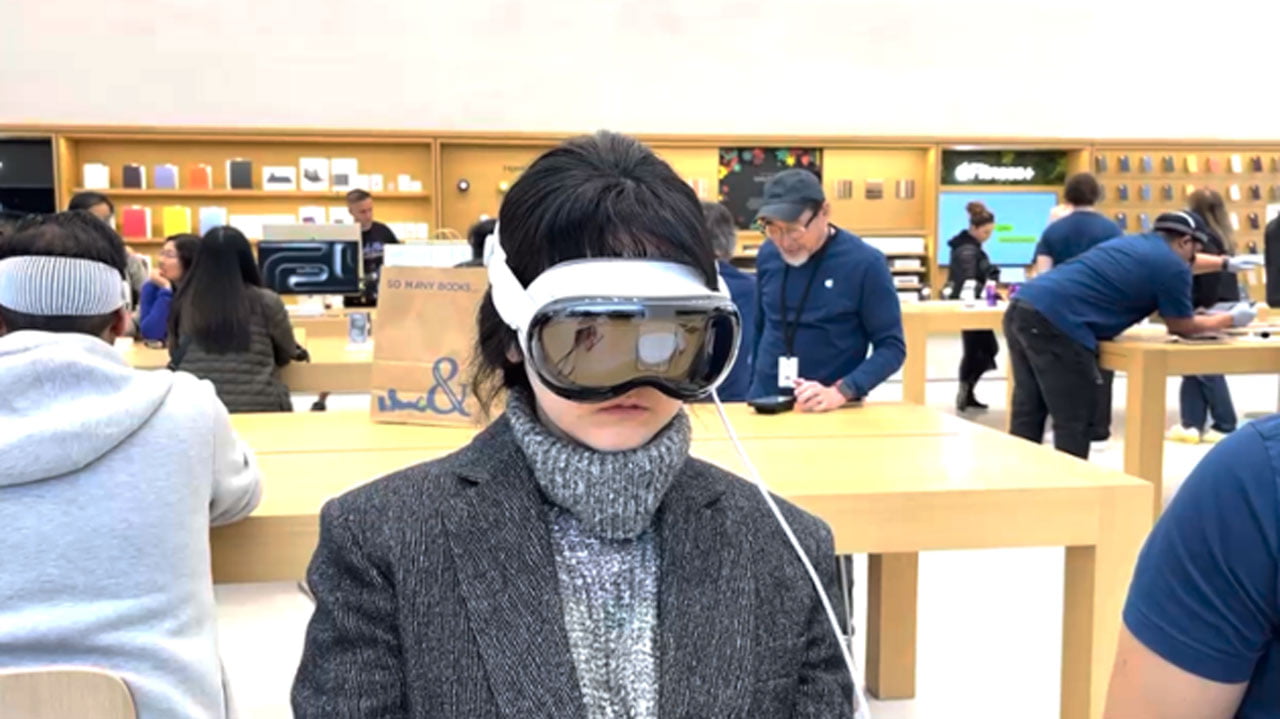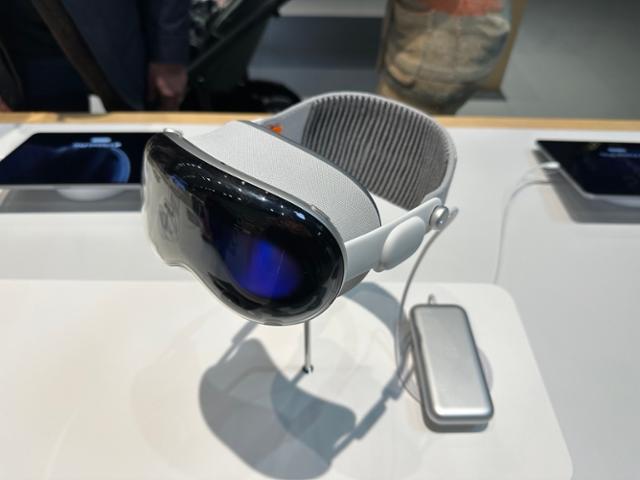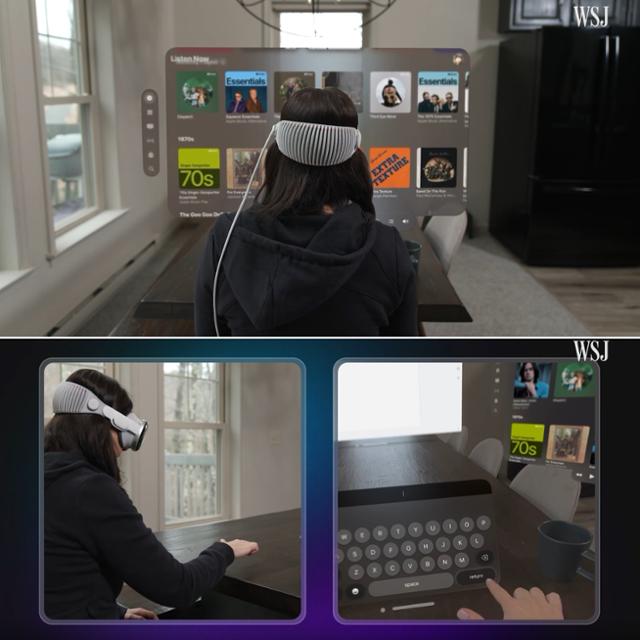Apple Decided To Open A New World Of Mixed Reality

Apple Decided To Open A New World Of Mixed Reality. After Using ‘Vision Pro’, I Was Disappointed With ‘This’. Apple’s ‘Mixed Reality (MR)’ headset, ‘Vision Pro’, was officially released in the United States on the 2nd (local time). Apple’s first major new product in nine years since the Apple Watch launched in 2015 has finally met consumers.

Apple first unveiled the Vision Pro at the Worldwide Developers Conference (WWDC) in June last year, calling it “the first space computer.” Unlike existing computers, which input through a mouse and vending machine and output results through a flat monitor, this means that it is controlled through eyes, hands, and voice, and shows three-dimensional (3D) images and videos on a display right in front of the eyes. The Vision Pro, which I experienced for 30 minutes at an Apple store in Silicon Valley, USA on the 3rd (local time), was a device that perfectly fit the description of a ‘spatial computer’.
Its greatest strength was that it was intuitive and easy to use, with a ‘click’ being executed just by looking at it with your eyes and pinching the tips of two fingers together. The ultra-high-resolution display with 23 million pixels densely provided an incredible sense of immersion, as if one had ‘teleported’ using superpowers. However, there were also obvious drawbacks to the product that made people hesitate to purchase it.
All You Need Is Your Eyes And Two Fingers To Operate World Of Mixed Reality.
When I saw the Vision Pro in person, which I had only seen in pictures, my first impression was, ‘It’s heavy. ’ Ski goggle-type headsets, such as the Vision Pro, have been cited as a disadvantage in that they are heavy and cannot be used for long periods of time, but this product also felt heavy even though efforts were made to minimize the weight, such as by separating the battery from the product. However, the weight when actually worn was not as burdensome as expected. The part that touches the face is made of soft fabric, so it is comfortable to wear.

When you first turn on Vision Pro, one of the first things you need to do is integrate your eye and hand movements with Vision Pro. You must stare at a dot floating in front of you and pinch it with two fingers at least 18 times. The location of the dot keeps changing. Only through this process can Vision Pro recognize eye movements without error.
What you see after completing the preset is the so-called home screen, where several basic applications (apps) are neatly arranged. Just look at the app icon and pinch to launch the app. What’s interesting is that you don’t have to put your finger close to the icon, but just ‘tap’ it like a pinch . To achieve this, Apple installed as many as 12 cameras and 5 sensors inside and outside the Vision Pro. “As long as you don’t keep your hands behind your back, it can recognize your finger movements regardless of whether they are on your lap or above your head,” the Apple employee explained.
Other uses are also very simple. For example, if you want to scroll down the screen, just hold the scroll bar with two fingers and scroll down. Also, when you want to zoom in or out on a photo or video, you can grab the content with two fingers of both hands and then expand and narrow your arms. Vision Pro is a mixed reality headset that implements both virtual reality (VR) and augmented reality (AR, which adds virtual elements to reality in front of your eyes).
This means that you can use VR and AR back and forth. Screen switching is possible through the button called ‘Digital Crown’ on the top of Vision Pro. For example, when you want to focus only on a movie, you can turn the digital crown toward VR to completely block the view. On the other hand, if you want to cook while watching a recipe through Vision Pro, you can switch to AR mode where you can see the entire surrounding environment. The Vision Pro’s value seemed to be maximized when watching 3D videos.
During this experience, I was able to watch a 5-minute video that Apple specially produced to promote Vision Pro, and it was so immersive that it really felt like the real thing. When a soccer game scene appeared that seemed to have been filmed behind the goalposts in a soccer field, it felt like I had actually been transported right behind the goalposts. When a rhino came close to me at the zoo, I would take a step back without realizing it.
Pay $3500? Well
After finishing the product experience, the thought that came to mind was, ‘ This is indeed a product made with great care by Apple .’ Intuitiveness and immersion were clearly superior to other products I had used so far.
However, after using the product, I suffered from dizziness for a while. Apple also seemed unable to completely resolve dizziness, which has been cited as a chronic drawback of VR and AR devices. It was also annoying that marks from the device remained on my face after wearing it. Above all, it was disappointing that it would be difficult to use it ‘outside the home’ given that the battery is external and the product itself weighs 600g.
The biggest limitation of the Vision Pro is its high price, which costs a whopping $3,499. It is clear that it is a convenient and amazing product, but it would not be easy to pay close to 5 million won for it unless you are a developer or Apple enthusiast.
There are usually long queues in front of stores whenever Apple’s new products are released, perhaps due to price and other shortcomings, but foreign media reported that in the case of Vision Pro, the queues were not as long compared to other product launches in the past. The market predicts that up to 500,000 Vision Pro units will be sold this year. This is an extremely small quantity compared to the iPhone, which sells over 200 million units annually.
See More:
World Record For Longest Stay In Space Broken
EU Approves World’s First ‘AI Law’: Effective As Early As Next Month
First Successful Remote Control Robot With Legs Not Wheels’ In Space
Why In China’s Apple And Samsung Smartphones Become A Graveyard




Leave a Comment